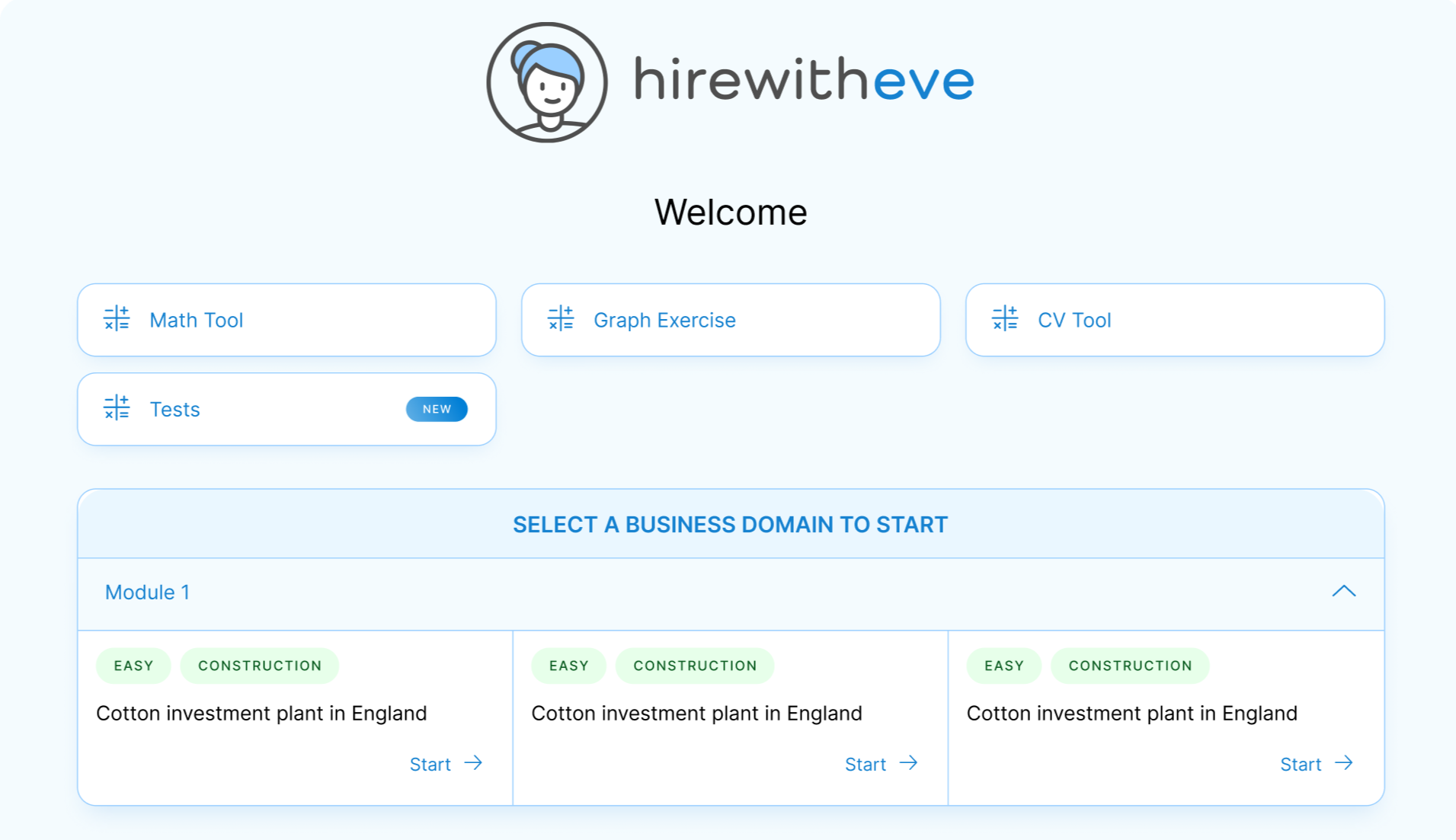Data-Driven HR: A Guide to Strategic Decision-Making

In today’s rapidly evolving business landscape, HR professionals must leverage data-driven strategies to stay ahead. Data-driven HR is not just a trend but a necessity that helps organizations focus on crucial areas like talent acquisition, retention, engagement, and DEI (Diversity, Equity, and Inclusion). By making informed decisions based on data, HR can significantly impact the overall success of the organization.
HR is no longer just about managing people; it’s about managing data that relates to people. In an era where every decision counts, data-driven HR helps organizations streamline their processes, reduce biases, and ultimately, drive better outcomes. For HR professionals, understanding how to harness the power of data is critical.
Table of contents
Understanding Data-Driven HR
The Importance of Data in HR
How to Get Started with Data-Driven HR
Crafting Your Data-Driven HR Strategy
Why HirewithEve is the Right Platform for Data-Driven HR
Conclusion
Understanding Data-Driven HR
Data-driven HR refers to the practice of making HR decisions based on data analysis and interpretation. This approach helps in everything from hiring and compensation to retention strategies and employee engagement. By leveraging analytics, HR can find patterns and insights that inform strategies to motivate employees and enhance productivity.
To implement a successful data-driven HR strategy, it’s crucial to collect, analyze, and interpret relevant data. This includes data on employee performance, compensation, and market trends. The goal is to use this information to make informed decisions that benefit the organization.
The Importance of Data in HR
Increasing Workforce Productivity
Productivity is the cornerstone of any successful organization. With the help of analytics, HR can identify the factors that drive or hinder productivity. Once these factors are identified, strategies can be developed to optimize productivity, ensuring that employees are performing at their best.
Enhancing Retention, Engagement, and Talent Acquisition
One of the critical challenges for HR is to attract and retain top talent. A data-driven approach can assist in understanding market trends, candidate preferences, and the sources of the best hires. Once employees are onboarded, data can help HR develop effective retention strategies that keep top performers engaged and satisfied.
Driving Corporate Innovation
Innovation is essential for long-term success, and data can play a crucial role in fostering it. By analyzing data, HR can understand which strategies boost collaboration and innovation. Moreover, data-driven recruitment strategies can help attract innovators who will drive the company forward.
Identifying Hidden Causes of Problems
Organizations often face challenges, but understanding the root cause of these issues can be difficult. A data-driven HR model helps in identifying not only what is happening but also why it is happening. This allows HR to address problems effectively, making targeted changes where they are needed most.
Making Better Decisions for the Future
Predictive analytics is a powerful tool that uses historical data to predict future outcomes. For HR, this means being able to anticipate trends and make informed decisions about the future, rather than relying on guesswork. This capability is invaluable for strategic planning and long-term success.
Eliminating Biases
Unconscious biases can significantly impact HR decisions, often leading to unfair practices. A data-driven approach allows HR to identify and eliminate these biases, ensuring that decisions are based on facts rather than assumptions.
How to Get Started with Data-Driven HR
Integrate Data into All Parts of Your Business
The first step to becoming data-driven is to collect relevant data. This can come from various sources, including Applicant Tracking Systems (ATS), employee surveys, and KPIs. Once the data is collected, it should be integrated across all parts of the business to gain actionable insights. Tools like people analytics can help HR understand not just what is happening but why it is happening.
Set Clear Goals
Data without clear goals is just noise. It’s essential to define SMART (Specific, Measurable, Achievable, Relevant, Time-bound) objectives that guide your analytics efforts. These goals will help you focus on collecting the data that matters, avoiding unnecessary information overload.
Implement Analytics Solutions
There are various analytics tools available, each serving different purposes. People analytics, for example, provides insights into all aspects of your workforce, including employees, customers, and candidates. Workforce analytics focuses specifically on employee data, while predictive analytics helps forecast future trends. Choose the tools that best align with your goals and start integrating data-driven insights into your HR strategies.
Benchmark Against the Competition
Benchmarking HR metrics against industry standards can provide valuable insights. It allows you to validate the accuracy of your data, set better goals, and improve strategies related to talent acquisition and retention. This competitive analysis ensures that your HR processes are not just good but the best in the industry.
Crafting Your Data-Driven HR Strategy
Identify the Business Problem
A successful data-driven HR strategy starts with identifying the business problems you want to solve. Whether it’s reducing attrition, improving recruitment, or boosting employee engagement, having a clear focus will make your efforts more effective.
Ensure Data Quality and Accuracy
Accurate data is the foundation of a successful HR strategy. Automating data collection can minimize errors and ensure that the data you use is reliable and up-to-date. Tools like data connectors can help extract data automatically, making the process more efficient.
Create a Data-Driven Culture
For data-driven HR to be effective, it needs to be embraced by the entire organization. This means promoting a culture where data is integral to decision-making. Providing training and resources can help employees adapt to this mindset, ensuring that data-driven practices are implemented consistently.
Analyze Data
Once you have collected data, the next step is to analyze it. Analytics tools will help you understand your metrics and identify trends within the company. With this information, you can develop strategies to improve processes and achieve your business goals.
Consider Ethical and Legal Aspects
When dealing with employee data, it’s essential to consider ethical and legal implications. Ensure that your data practices comply with regulations such as GDPR or CPRA. Implement security measures like encryption and access control to protect sensitive information.
Measure Your Progress
Finally, it’s important to regularly assess the effectiveness of your data-driven HR strategy. Measure outcomes against your predefined KPIs and adjust your approach as needed to stay on track with your goals.

Why HirewithEve is the Right Platform for Data-Driven HR
HirewithEve is designed to meet the needs of modern HR professionals who are committed to a data-driven approach. Here’s how the platform can help:
Skills-Based Hiring: The platform emphasizes the importance of hiring based on skills rather than just credentials or past job titles. This approach allows employers to find candidates who are a better fit for specific roles, especially in industries where specific skill sets are crucial.
Remote Hiring Support: Given the shift towards remote work, the platform likely includes features that help companies find and hire the best talent from anywhere in the world, breaking down geographical barriers.
ATS (Applicant Tracking System) Integration: HirewithEve might offer integration with ATS platforms to improve the efficiency of the hiring process, making it easier for HR teams to track and manage candidates.
Analytics and Insights: The platform may offer analytics features to provide insights into hiring trends, candidate performance, and the effectiveness of various hiring strategies.
By using HirewithEve, HR professionals can create a more efficient, effective, and fair workplace, driving better outcomes for the entire organization.
Conclusion
Data-driven HR is no longer optional, it’s a necessity in today’s competitive business environment. By leveraging data, HR professionals can make informed decisions that enhance productivity, improve retention, and drive innovation. HirewithEve is the ideal platform to help you implement a data-driven HR strategy, providing the tools and insights needed to succeed.
Target Your Talent
Unlock tailored solutions for your recruitment and hiring needs with Eve Platform's extensive case study library.
Subscribe now to enhance your HR expertise and excel in your role.
Free Resources

Transforming Hiring: 7 Key Recruiting Metrics
Enhancing recruitment processes with data-driven insights for better hiring outcomes.

Reducing Hiring Bias with Hirewitheve.
Utilizing Hirewitheve to combat bias and streamline recruitment processes effectively.

Hiring Detail-Oriented Candidates
HirewithEve enhances hiring by accurately assessing candidate's attention to detail-oriented.








